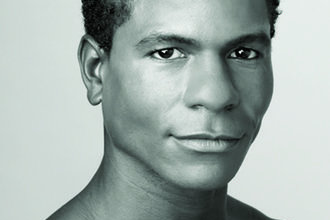If you’re having problems finding any of your dancer friends this weekend, it’s probably because the world-renowned Alvin Ailey American Dance Theater is in town, performing Feb. 26-27 at the Kimmel Center.
Ailey founded his company in 1950, leading it until his death from AIDS in 1989.
Abdur-Rahim Jackson, a Philadelphia native and ardent fan of Ailey’s work, joined the company in 2001 and continues to perform in the dance theater alongside his wife, Olivia Jackson.
Ailey was born in Texas during the Great Depression, and didn’t begin studying dance until 1949, by which time he was living in Hollywood, Calif. By 1954, Ailey was a skilled-enough performer on the West Coast to get invited to New York City to dance in Broadway shows.
But, dissatisfied with the quality of modern dance in New York, he began to create his own works, and started the dance theater that would bear his name in 1958. At a time when there were few professional opportunities for African-American dancers, Ailey’s company quickly rose to global acclaim due to Ailey’s unique and expressive fusion of ballet, jazz and modern-dance techniques, as well as his use of blues, spiritual and gospel music.
Before his death, Ailey handpicked his successor, longtime dancer and protégé Judith Jamison, who has kept his dance theater going strong to this day.
Abdur-Rahim Jackson spoke to PGN about his experiences with the famous dance company and how it strives to live up to the vision and the legacy of its namesake.
PGN: Outside of performances, do you get back to Philadelphia often? AJ: No. We’re traveling so much throughout the year and, in the off time I have, I’m working on my own project and my own choreography. The last time I was in Philly was the last time Ailey was there, three years ago.
PGN: You’ve been with the dance theater for 10 years now. Is in uncommon for a dancer to be with the company for more than a decade? AJ: No, it’s not, because what is beautiful about the company is the first couple of years you’re in there, you’re getting your feet wet. You’re learning and, after that, you then start to find your position and what you have to offer. And then after that, I feel like I’m experiencing now a sense of freedom. So I think a lot of experience comes from the time you do stay with the company. There’s a lot of people that have spent 10 or more years in the company now.
PGN: Are you encouraged to bring the work you choreograph to the company? AJ: One privilege that I did have in 2006 was that myself and two other choreographers collaborated on a piece. It was an offer Ms. Jamison put on the board for dancers to join together and collaborate on a piece. We submitted a proposal and we got accepted. So in that year, we got to create a piece called “Acceptance and Surrender.” And when we went to Paris for a festival there, that piece was requested. So that was an amazing experience because it showed that people of another culture appreciated it.
PGN: Do you think the perception of the Alvin Ailey American Dance Theater with international audiences is different compared to how it’s perceived by American audiences? AJ: I love the fact that there’s so many ranges of love. There’s not only one way. When we’re in America, people love and appreciate us one particular way. Then we go to Europe and it’s another sense of love and communication and energy that they give to us when we perform. So I would say it’s the same. It’s not that one or the other is better. It’s just a unique and special type of love that comes from going to different places.
PGN: Did you have any perceptions about the Alvin Ailey Dance Theater before you joined that you found weren’t accurate? AJ: No. I remember the first time I got to see Ailey live. My mother, she taped Ailey when it was on “The Donahue Show.” That was my first introduction. The visual just blew me away. I would watch it so many times in one day every day for the longest time. Then when I was training at Philadanco with a program that they have, I came there, ready for class, and it was deserted in there. No one was there. Not even the receptionist. Then somebody came up to me and said, “You didn’t get an Ailey ticket?” I said, “Where?” And they were performing at the Shubert Theatre and I grabbed that ticket and got on a train and got down there. The show had started. I missed the first piece but then got to see the second and third piece. That impression that it left on me, I felt like I was watching real-live superheroes dancing on stage. I still feel like that now that I’m there, that everyone pushes and demands the best out of themselves. There’s nothing that I would say that is something different than expected because I saw them as superhuman beings and I am a part of that. So that’s what I love about being in the company.
PGN: In your opinion, is there any higher plateau in the world of dance than this? AJ: Is there a higher plateau than this? No, because this is what everybody expects and they know that the reputation is the best. So in America, I would say this is the highest standard because you have the best dancers all in one company. When I was younger, I didn’t know that I wanted to dance or be in a dance company. I just said I just want to be a part of the best thing that has something to offer to me. It worked out that I ended up being here. I didn’t have a particular place so that’s what I’ve been about when I put that energy out there.
PGN: Do you have any insights into how the company has evolved over the last 10 years or since it started? AJ: I think the responsibility that each dancer has, opposed to when it was earlier, it was more about sharing your emotion. When you watch old tapes of the Ailey company, it was more about passion and emotion and giving all that they can. But they weren’t physically able to do what we can do now. The body has just totally evolved. People can jump higher, turn more, the legs can go past what the human body can do. That’s a responsibility that the newer generation has. Not only must we hold on to the passion and the raw emotion, but we almost have to physically bring that up to the standard of what our bodies can do today. So that’s the evolution and Ms. Jamison always refers to this. She says, “I know you can do this and you can kick here and bend down there, yet you must be in the moment of the piece and the story.” That is the evolution that is different from when it first started.
PGN: With jazz, blues and gospel playing a large role in Alvin Ailey’s works, how much has the influence of hip-hop been incorporated into the dance theater? AJ: We had a piece in 2004 that was a three-part piece where Ms. Jamison collaborated with Renee Harris and Robert Battle. That summer was amazing because I’m from Philly. I’ve known Renee since I first started dancing there and the fact that he was coming to a company that I was in and I was an adult, and what he did with the piece, every day that he came in, it was pretty much a workshop to get the styles of hip-hop. We have that piece out in repertoire called “Love Stories.” And the audience, they just loved it. It was a good platform to show the virtuosity of the company.
PGN: Why do you think Alvin Ailey’s works have endured in influence and popularity for so long? AJ: Because his story was honest and he has a beautiful way of doing things on a genuine level and not over-choreographing it or embellishing things. Everything is genuine and it comes from the story that he has to share, which is called his blood memories. So we all can relate to it. His famous quote is, “Dance came from the people and should be delivered back to the people.” It feels like that when you’re performing it or even watching it. When somebody does something like that, I’ve seen and learned that it will last for a long time.
The Alvin Ailey American Dance Theater performs at 2 and 8 p.m. Feb. 26 and 8 p.m. Feb. 27 at Kimmel’s Academy of Music, 240 S. Broad St. For more information or tickets, visit www.alvinailey.org or call 215-790-5847.

